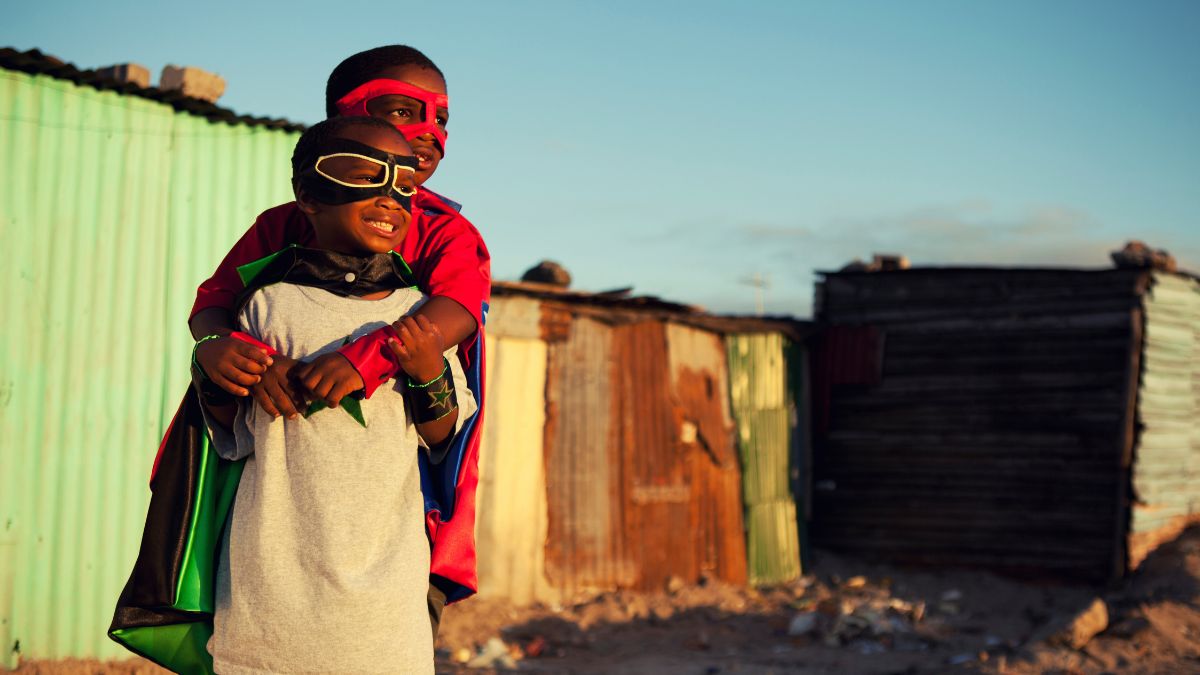There are 54 countries in Africa. Each one boasts an abundance of natural resources, from oil and gas to minerals and fertile land. Proven oil reserves in Africa are estimated at a staggering 7.1 billion barrels, while natural gas reserves stand at a colossal 50 trillion cubic meters. Africa also holds an impressive 60% of the world’s uncultivated arable land and boasts over 60% of the world’s cobalt reserves and a remarkable 90% of global chromium reserves. However, this resource wealth hasn’t always translated to widespread prosperity. According to data from the World Global Economy, the top 10 poorest countries in the world are all in Africa. In 2021, approximately 490 million individuals live below the $1.90 PPP per day poverty line.
Why is Africa Poor?
Africa’s economic situation dates back to centuries of exploitation, beginning with the transatlantic slave trade and culminating in the era of colonialism. According to economists Leander Heldring and James A. Robinson, countries with a higher degree of colonial extraction exhibit lower levels of income and greater economic inequality today. One key challenge for many African countries is their historical development model. Many African economies have relied heavily on exporting raw materials like oil and minerals for years. According to the World Bank, primary commodity exports account for over 60% of total exports in 45 of the 54 countries in Africa. While this has generated revenue for these countries, it also created a lopsided development model. Big economies like Nigeria became dependent on the export of raw materials; however, it left them susceptible to fluctuating global prices. For instance, a sharp decline in oil prices in 2014 led to a recession in Nigeria’s economy. A similar situation happened in Angola in 2019, where oil exports comprised 90% of the country’s total exports. As of 2024, oil exports still account for 70% of Nigeria’s total exports.

Oil and gas industry. Worker controlling crude oil production. Source: By Smederevac via Canva
This dependence on volatile markets exposes these economies to external shocks and hinders diversification efforts. The International Monetary Fund (IMF) reports that the share of manufacturing in Africa’s GDP has stagnated at around 10% since the 1970s, highlighting the lack of economic diversification and industrialization. This makes it difficult to build a more stable economic foundation.
Weak institutions and corruption are also significant impediments to economic development in Africa. Transparency International’s 2022 Corruption Perception Index reveals that over half of the countries in Sub-Saharan Africa score below 50. Somalia scored only 12 points on the index, indicating serious corruption issues. Civil wars, ethnic conflicts, and political instability also create an environment of uncertainty that discourages investment and disrupts economic activity. Since 2020, Africa has experienced seven coups. In 2023, Niger experienced a coup that led to an alleged suspension of exporting uranium and gold to France, its leading trading partner.
Related Articles:
Many African countries also grapple with a heavy burden of external debt accumulated through unsustainable borrowing practices. The International Monetary Fund (IMF) estimates that Sub-Saharan Africa’s external debt stock will reach $702 billion in 2022. More than half of the low-income countries in sub-Saharan Africa were assessed to be at high risk or already in debt. Debt servicing alone is said to consume an average of 15.2% of government revenue in Sub-Saharan Africa. This debt servicing obligation diverts resources from crucial investments in education, healthcare, and infrastructure development, further hindering economic growth and poverty reduction efforts. According to UNESCO, African governments spend 4.1% of their countryʼs GDP on education, which is just below the global average of 4.3%. This limited investment in education hinders the development of a skilled workforce, which is essential for economic growth and diversification. Similarly, inadequate investment in healthcare can lead to a less healthy population, reducing productivity and overall well-being. This also led to Africa’s wealth being unevenly distributed. Currently, the top 10% of income earners in Africa capture approximately 50% of total income, further exacerbating inequality and perpetuating poverty among the majority.
However, Africa’s economic story is far more nuanced, as Africa possesses tremendous potential for economic growth. The continent boasts a young and growing population, with the median age expected to be 28.7 by 2050. This young population is a powerful driver of economic growth as a significant workforce. The World Bank forecasts that Sub-Saharan Africa’s GDP will grow 3.6% in 2024.
The continent is already experiencing positive developments. Many countries are making several efforts to diversify economies, invest in infrastructure, improve governance, and address corruption, offering a path towards a brighter future. For example, Ethiopia has been actively promoting its garment industry. In 2023, Ethiopia’s textile and garment exports reached $5 billion, making it the largest apparel exporter in sub-Saharan Africa. This has helped reduce reliance on coffee exports and diversify the economy. More countries are also embracing technology like automation, digital tools, and e-commerce to revitalize their economies. Africa can unlock its immense potential by implementing these strategies and capitalizing on its vast resources and growing population.












This Post Has 0 Comments